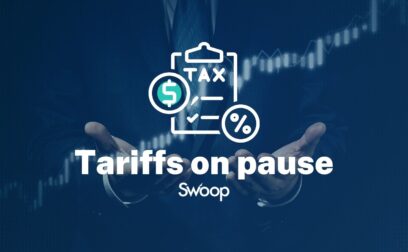TABLE OF CONTENTS
You don’t want to be in the business of chasing money. Invoice finance can help you collect up to 95% of what’s owed to you, in just a day or two.
Page written by Michael David. Last reviewed on October 3, 2024. Next review due April 1, 2026.

Forget waiting on unpaid bills. Invoice financing lets you complete an order, send a bill, and have funds advanced to you in 48 hours or less. Then you have the cash you need to buy materials, cover expenses and grow your business. You can continue to keep track of your invoices until they are paid, or let the lender pursue outstanding payments for you. Invoice financing gives you options.
Invoice financing can help your small business get paid faster. Instead of sitting on unpaid invoices, you can receive a large percentage of each invoice as soon as it is issued. Invoice finance is a type of borrowing that uses the security of your company’s unpaid invoices as security for a loan or advance.
If your business has a track record of invoicing several thousand dollars per month and waiting at least a few weeks to collect on those invoices, you can potentially qualify to receive up to 95% of the invoice value in as little as a day or two.
This type of borrowing can be particularly helpful if your business lacks physical asset such as property, equipment or vehicle that can be pledged as collateral for a loan. Your unpaid invoices are treated as collateral, and there is usually no need to provide additional security.
With invoice finance, you issue an invoice to a customer, then you receive a percentage of the invoice value as a loan from a an invoice financing company. Payment is usually made within 48 hours of submitting your invoice. The sum you receive may vary from 70% to 95% of the invoice value. You retain control of your sales ledger and are still responsible for chasing your customers for payment.
When the customer pays, their payment goes into a trust account that is actually controlled by the invoice financing company. Once the loan is repaid, the lender deducts interest and fees and transfers any remaining balance to your bank account. In most cases, the customer will never know you used the invoice as security for a loan.
Invoice financing can be used for all of your invoices, or you can choose the specific customers and invoices you want to use for a loan.
Invoice financing functions in a similar way as a revolving credit line or a series of short-term bank loans. However, unlike those types of lending, you generally do not need to provide assets as collateral, nor are you required to supply a personal guarantee. There are many invoice financing options available to small business across Canada. Join Swoop to start reviewing the best options for your needs in minutes.
There are two broad sub-types of invoice financing, and the main difference is who collects on the unpaid invoices:
Invoice financing and invoice factoring have different cost structures. Invoice financing companies charge interest on the loan, plus an administration fee. Factoring agents charge something called the “factor rate.” Because factoring agents assume responsibility for chasing customers for payment, their administration costs tend to be higher and they usually cost more.
Invoice financing costs
Invoice financing costs are straightforward. You are charged interest and credit management fees. Typical interest rates range from 1.5% to 3% over the Bank of Canada rate, and credit management fees typically add another 0.25% to 0.5%. There may also be other costs – such as an origination fee for processing the loan. The interest and fees are usually billed on a monthly cycle.
Invoice financing companies will consider risk when calculating your individual interest rate and fees, including the creditworthiness of your customers, the length of time they take to pay, and the credit history of your business.
Invoice factoring costs
Your invoice factoring cost is called the factor rate. It is based on the level of risk and the volume of invoices. Factoring companies look for high volume and low risk, meaning they prefer big-ticket invoices owed by customers who are unlikely to default.
Factor rates can vary from 0.5% to 5% of invoice value. This is applied as a fee for a set time – for example, 3% for the first 30 days of an advance against the invoice. Many factors will charge additional fees if the invoice is outstanding longer – for example, 0.5% for each 10 days after the first 30 days. Some factors set a flat fee that does not escalate.
Here are some of the things that will affect your factor rate:
The terms and costs of invoice financing can vary and it may be difficult to find and compare all your options. Register with us to quickly receive a quote that is tailored for your business.
Construction company. A builder was struggling to pay workers, buy materials and meet deadlines because of payment delays. It was not uncommon to wait months to collect on invoices. The builder struck a deal with an invoice factoring company that would allow them to almost immediately receive 95% of the value of their invoices. This not only solved their cash flow issues, it also allows them to move on to the next construction project while letting the factoring company worry about chasing clients for payment.
Wholesale business. Every time a wholesaler sent a bill to their customer, they’d end up having their money tied up for 60 days waiting for payment. Here’s how their new invoice financing arrangement works: The wholesaler bills their customer for $10,000 and sends a copy of the invoice to the lender, who immediately advances $8,000 to them. In 60 days, when the customer pays, the lender takes back their $8,000 plus $300 in fees and interest, and forwards the remaining $1,700 to the wholesaler.
Use our handy invoice finance calculator to get an understanding of how much you could release from invoices owed to you.
* Will be paid to you when your client has paid the invoice in full and within the agreed invoice term.
This calculator is intended for illustration purposes only and exact payment terms should be agreed with a lender before taking out a loan.
Whether you choose invoice financing or invoice factoring, there are several advantages over many other forms of business borrowing, such as.
Want help getting started on invoice financing? Join Swoop to check out your options in minutes.
There are no hard and fast disadvantages of invoice financing, but there may be reasons why it is not your first choice for business financing.
For example, if you have tangible assets that you can pledge as collateral for a business loan such as property, equipment or vehicles, you may be able to borrow a larger amount and do so at a lower rate of interest than you would with invoice financing.
In addition, a conventional business loan enables you to maintain privacy regarding your borrowing activity, whereas invoice factoring will reveal to your clients that you are using third-party invoice financing.
With P2P invoice financing, an online platform or marketplace connects businesses that are owed outstanding invoices with investors who wish to purchase those invoices at a discount. It is similar to conventional invoice financing, except the lender may be an anonymous investor sourced on the Internet rather than a recognized finance company. In addition, the online platform may levy a fee that adds to your total cost of borrowing.
Most likely, yes. Invoice financing approvals are largely based on the financial strength of your customers, their payment history, and the terms of your invoices. Your personal credit should not be a factor.
However, as with many other forms of business borrowing, the lender will usually ask to see recent accounts and perhaps your business bank statements. They must be confident that your business is not in difficulty. If you have a small business, lenders may also review your personal credit.
Once you are approved for invoice financing, the time between submitting an invoice and receiving funds is typically less than 48 hours.
Calculating the best type of invoice financing, the lowest rates, and the ideal lender for your business can be very time-consuming. Join Swoop and we will make the application process a snap.
Michael David is a financial writer and former investment advisor. Writing for Capital Group, Dimensional Fund Advisors, Franklin Templeton Investments, HSBC, Invesco, PIMCO, Vanguard, global insurance companies, major banks and others, he has educated professionals, business owners and consumers about strategies for investing, insurance, banking and corporate finance for more than 20 years.
Swoop promise
At Swoop we want to make it easy for SMEs to understand the sometimes overwhelming world of business finance and insurance. Our goal is simple – to distill complex topics, unravel jargon, offer transparent and impartial information, and empower businesses to make smart financial decisions with confidence.
Find out more about Swoop’s editorial principles by reading our editorial policy.
Related pages
Get your free Invoice finance quote today
Join the 95,000+ businesses just like yours getting the Swoop newsletter.
Free. No spam. Opt out whenever you like.
Kingfisher Way, Silverlink Business Park, Newcastle upon Tyne, NE28 9NX, UK
View in Google Maps35 Bull Street, Lewis Building, Birmingham B4 6AF, UK
View in Google MapsAberystwyth Innovation and Enterprise Campus
Gogerddan Campus
Aberystwyth University
Ceredigion
SY23 3EE
Dogpatch Labs, The CHQ Building, Custom House Quay, Dublin, Ireland
View in Google MapsSuite 801, Level 8, 84 Pitt Street, Sydney, NSW 2000, Australia
View in Google Maps43 W 23rd St, New York, NY 10010, United States
View in Google Maps21 Dreyer Street, Cape Town, South Africa, 7708
View in Google MapsClever finance tips and the latest news
Delivered to your inbox monthly
Join the 95,000+ businesses just like yours getting the Swoop newsletter. Free. No spam. Opt out whenever you like.




